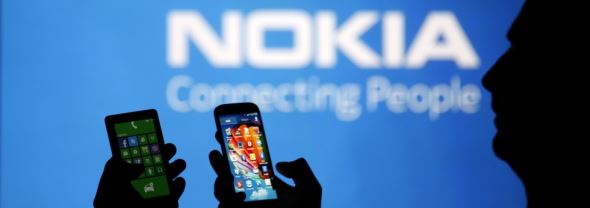Reflections on Microsoft & Nokia (part 1)

So it’s now been several days since the shock announcement that Microsoft are acquiring Nokia. And we’ve had plenty of time now to hear opinions from talking heads and industry experts as well as let the news sink in. But now it’s time to look back and what exactly happened, why and what it means for consumers and all companies involved in mobile technology. Over the next three parts of this series, we’ll do exactly that.
The rise and fall of Nokia
First of all, let’s look at the history of Nokia. The company was actually first started in Tampere, Finland in the 19th century. However, it got into the telecommunications business in the 70s and created the radio telephone company Mobira Oy in 1979. The first Nokia mobile phone was released in 1981 and in 1982 it came out with the Mobira Senator carphone.
Nokia was also the first company to come out with a handheld mobile with the Mobira Cityman which came in at a hefty weight of almost a kilo and would set you back several thousand pounds. Nokia were pioneering internet-ready phones with the WAP-enabled 7110 coming out in 1999. And who could forget the iconic Nokia 3210 which first introduced Snake to the masses 14 years ago and which sold over 160 million units.
For decades, the Finnish company has been synonymous with mobile phones. Many of us remember our first mobile phone which, more likely than not, was manufactured by Nokia. Indeed, they were the world’s biggest mobile handset manufacturer for over fourteen years.
However, with the advent of the smartphone and the popularity of Apple and Samsung’s models, Nokia has been in decline. In fact, 2012 was the first time since 1998 that Nokia’s sales were overtaken. As well as the success of Apple and Samsung, another huge factor was the growth of emerging mobile phone markets, especially in Asia where Android is dominant.
As a result, Nokia has found itself in a financial nosedive. As recently as 2011 it was still responsible for over 15% of all smartphone sales according to worldwide sales figures. However, by 2012 this figure had catastrophically plummeted to only 5%. And we can only expect to see this number fall further in the future. Nokia is now selling less than 10% of the smartphones as Samsung.
In fact, Nokia’s woes are only too well known to the 1,000 staff who were made redundant at the beginning of the year. Nokia’s falling sales has necessitated their efforts to o save money and streamline its operations by reducing outgoings on wages. Almost all the jobs that were axed were in Finland but many were in Canada and Germany. The redundant employees were replaced by far cheaper outsourced positions in India.
This wasn’t the first job cuts Nokia’s had to make in recent years. In fact, as part of a drive to realise over £1 billion in savings, Nokia has cut over 15,000 jobs since 2012. These massive figures just go to show, with absolute clarity, how far Nokia has fallen in recent years and how badly it has struggled to compete in the age of the smartphone.
Nokia’s revenues have crashed from over €7 billion to just under €3 billion in the second quarter of 2013. With a strong heritage selling feature phones, more affordable smartphones have meant that even in the developing world Nokia is losing sales. And in fact, it has been haemorrhaging money – there’s only been a profit for one of the last six quarters which really shows how precarious their position is.
Please let us know your comments so far. And please stay tuned for part two coming shortly where we discuss in detail the terms of the £4.6 billion deal and well as the relationship between Microsoft and Nokia as well as the controversial role of Stephen Elop.





